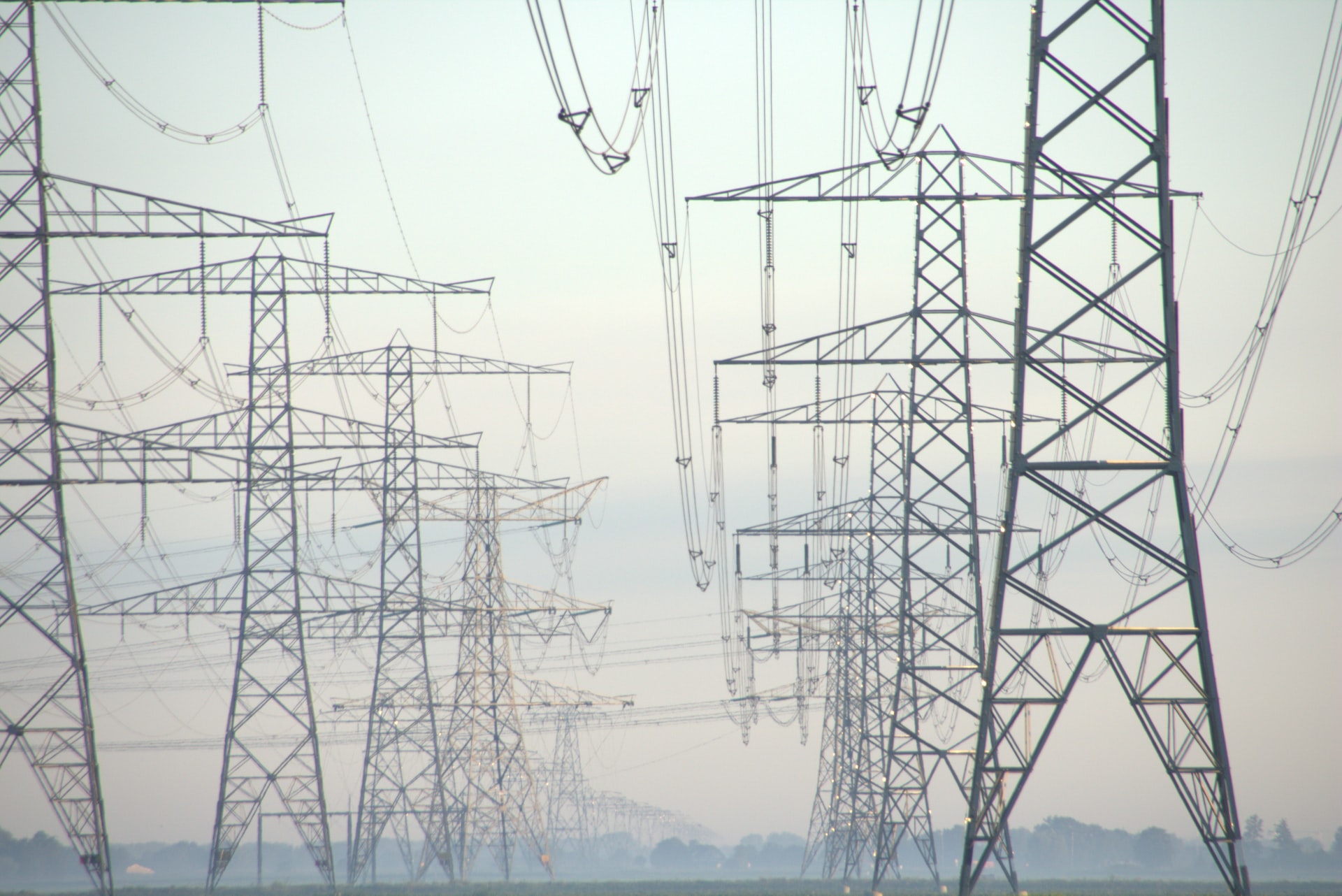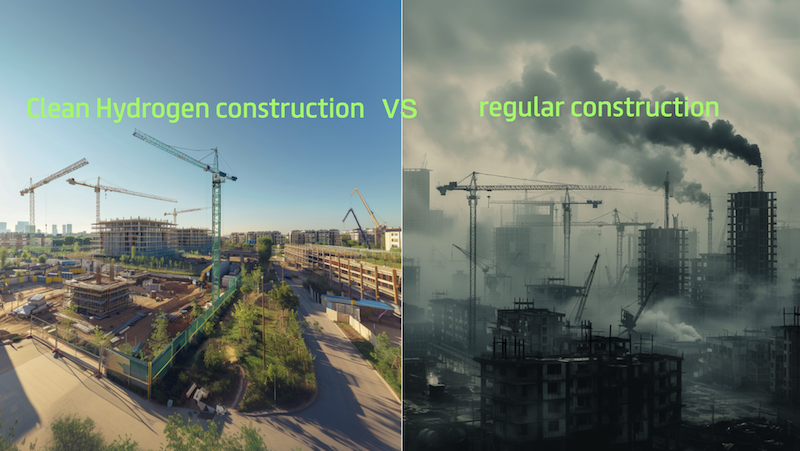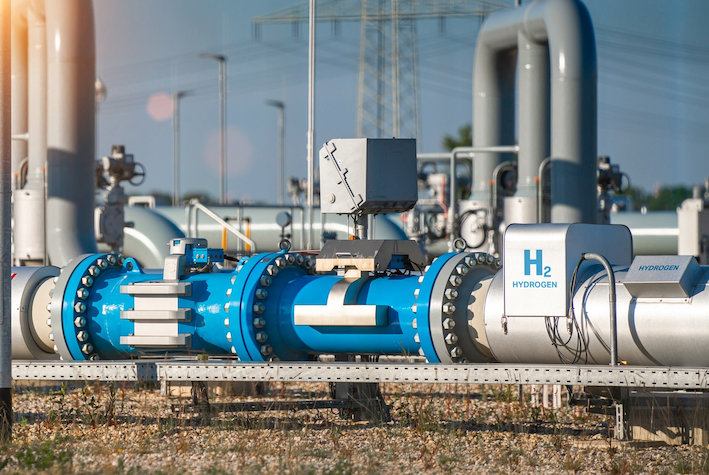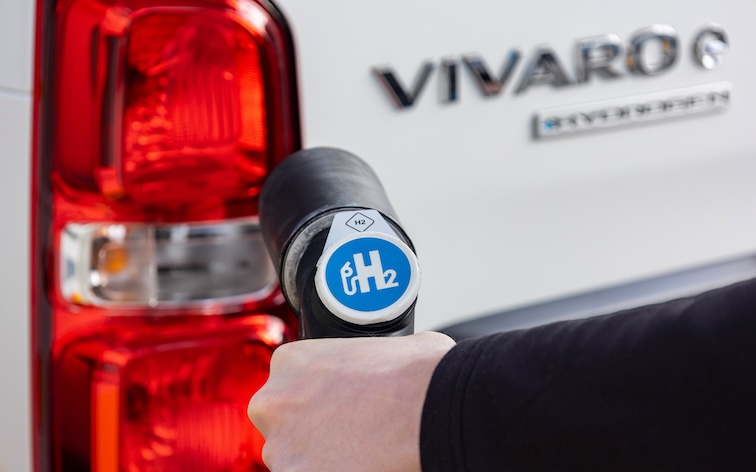The UK wasted a record 2.1 TWh of power in 2021 at a cost of £507 million as electricity was produced when there was insufficient demand.
As we build more wind and solar energy capacity this problem is only going to increase. Batteries will help. They can store electricity for short periods and release it when it’s needed, but most grid-scale batteries only hold 30-90 minutes of power.
To make a major dent in the UK’s curtailment numbers, higher capacity, longer-term energy storage is needed. One of the options is hydrogen, created by splitting water with an electrolyser powered by renewable energy. That hydrogen can then be burned in a power turbine when supply isn’t meeting demand.
Burning hydrogen produces no carbon emissions, while producing it through electrolysis is as clean as the source of the electricity.
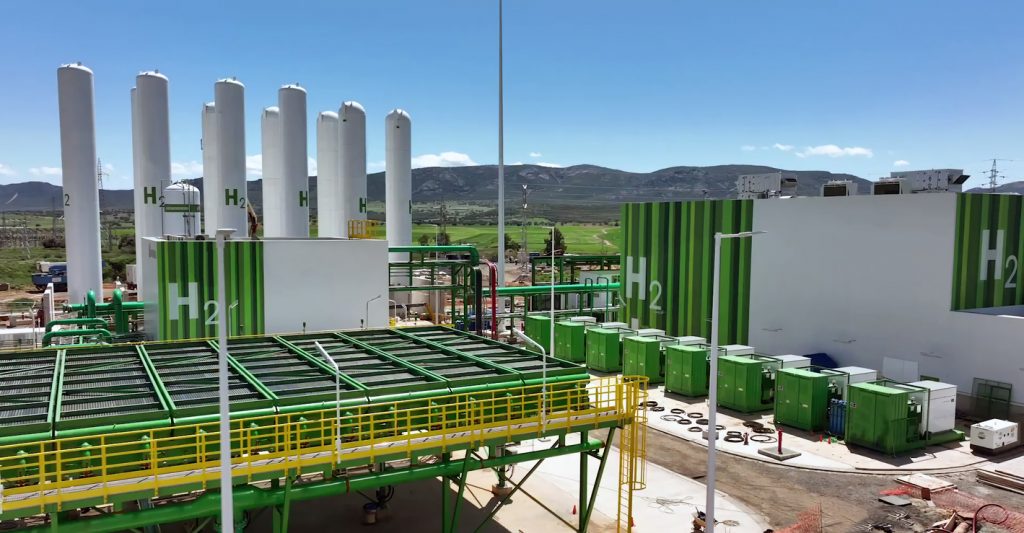
Burning hydrogen produces no carbon emissions, while producing it through electrolysis (production plant plan pictured) is as clean as the source of the electricity.
A recent paper from Aurora Energy Research found that replacing natural gas-fired flexible energy generation, known as a peakers, with clean hydrogen could save the UK up to £90 million compared with relying on short-duration energy storage.
By 2035, 8 TWh of renewable generation will be curtailed. If that power was used to produce hydrogen via electrolysis, it would provide the majority of the 13 TWh needed to power the UK’s peakers, according to Aurora. Increasing renewable and nuclear power by 7.5% compared to its base case would enable curtailed generation to meet peaker demand, it said.
The cost of converting natural gas-fired peakers to hydrogen-compatible units, building the additional renewable and nuclear capacity and 10 TWh of interseasonal hydrogen storage would cost £21 billion compared with between £82 billion and £112 billion for a battery-based solution, according to Aurora’s calculations.
The technology to enable hydrogen-fired power generation is maturing rapidly. GE has more than 100 gas turbines globally running on between 5% and 100% hydrogen. Energy companies such as Siemens Energy, SSE and Equinor also see a bright future for hydrogen power plants.
Earlier this year, the New York Power Authority became the first utility to burn hydrogen in a retrofitted natural gas turbine, opening the door to the clean fuel being used more broadly and sooner than previously considered likely.

Earlier this year, the New York Power Authority became the first utility to burn hydrogen in a retrofitted natural gas turbine, opening the door to the clean fuel being used more broadly and sooner than previously considered likely.
The IEA also sees both hydrogen and hydrogen-derived ammonia increasingly being blended with natural gas and coal for the production of power towards the end of this decade. A total of 410 GW of natural gas‐fired power plants and 160 GW of coal‐fired plants will be retrofitted by 2050 to co‐fire ammonia and hydrogen, providing 2‐3% of global electricity generation from 2030 to 2050, it predicts.
The numbers add up, the technology is ready go and the infrastructure to transport and distribute hydrogen is being built. The path is clear for the UK to embrace hydrogen power in the coming years.
To learn more about Ryze Hydrogen click here.
